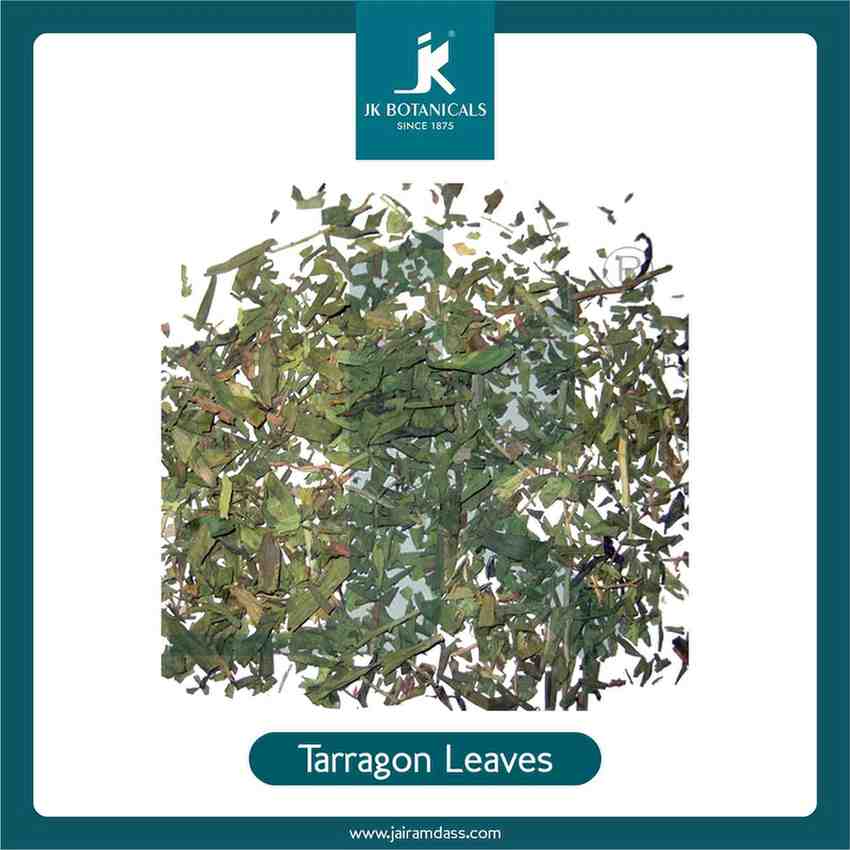Tarragon Leaves | Artemisia Dracunculus

Article No:
A0032/A
Botanical Name:
Artemisia Dracunculus
Other Name:
NA
Assay:
Saponins upto 30 %
Category:
Make an Enquiry!!
Product Description:
Tarragon leaves, scientifically known as Artemisia dracunculus, are slender, elongated herbs prized for their distinctive flavor and aromatic qualities. Characterized by their narrow, lance-shaped leaves and delicate texture, tarragon leaves boast a vibrant green hue and a subtle sheen. Their aroma is reminiscent of licorice, with hints of sweetness and a mild peppery undertone. Tarragon leaves are commonly used fresh or dried in culinary applications, particularly in French cuisine, where they are considered one of the fines herbes along with parsley, chives, and chervil. Their unique flavor profile adds depth and complexity to a variety of dishes, including sauces, dressings, marinades, and egg dishes. Tarragon leaves are also valued for their potential health benefits, believed to aid digestion and stimulate appetite. Whether employed as a culinary herb or admired for their ornamental beauty in gardens and landscapes, tarragon leaves stand as a testament to the rich diversity of flavors found in nature’s bounty.
Applications of Tarragon Leaves :
- Seasoning: Tarragon leaves are commonly used as a culinary herb to season and flavor a wide range of dishes. Whether used fresh or dried, tarragon leaves add a unique and aromatic touch to sauces, dressings, marinades, and rubs. They pair particularly well with poultry, fish, seafood, eggs, and vegetables, enhancing the overall flavor profile of dishes.
- French Cuisine: Tarragon is a key ingredient in French cuisine, where it is used in classic dishes such as Béarnaise sauce, fines herbes omelette, and tarragon chicken. Its distinctive flavor adds an elegant and sophisticated touch to French-inspired recipes, lending them a unique and memorable taste.
- Vinegars and Infusions: Tarragon leaves can be infused into vinegars, oils, and other liquids to impart their flavor and aroma. Tarragon vinegar, in particular, is prized for its subtle sweetness and herbal notes, making it a popular choice for salad dressings, marinades, and sauces.
- Herb Blends: Tarragon leaves are often included in herb blends and seasoning mixes, such as fines herbes and herbes de Provence. These blends combine tarragon with other herbs like parsley, chives, and thyme to create complex flavor profiles that enhance various dishes, from roasted meats to grilled vegetables.
- Garnish: Tarragon leaves can be used as a garnish to add a decorative touch and burst of flavor to finished dishes. Their delicate, feathery appearance makes them an attractive addition to salads, soups, and vegetable dishes, elevating the presentation and adding a touch of elegance.
- Infusions and Beverages: Tarragon leaves can be steeped in hot water to make tarragon tea, which is consumed for its potential health benefits and refreshing taste. Tarragon can also be used to flavor cocktails, mocktails, and infused waters, adding a unique and herbaceous twist to beverages.



